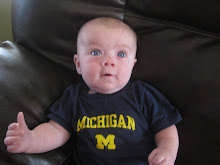Is a California Planned Parenthood employee shipping pounds of pot? That what it sounds like to me.
This week a Planned Parenthood in California received a package with their address as the return address after the postal service was unable to deliver the package to an address in Georgia. Some employees were suspicious of the package so they called in the bomb squad which found:
Inside the package was about four pounds of marijuana, baby diapers and a thank you card, Swithenbank said.
The card wasn’t written on in the inside, but was left blank with a generic greeting, he said.
Mollie Hemingway writes on how Planned Parenthood and NARAL got the Senate Democrats to vote against the human trafficking legislation they all favored just weeks ago.
Prior to March 10, no Democrats opposed the bill and Planned Parenthood and NARAL didn’t issue a peep about it. Since the afternoon of March 10, when Barbara Boxer dropped her support and Planned Parenthood decided to launch its public relations campaign against the bill, Planned Parenthood has tweeted some 60 times trying to gin up opposition — more than 60 percent of its tweets during that time. Cecile Richards, the head of Planned Parenthood, tweeted a couple dozen times, also beginning on March 10. And NARAL tweeted against the bill nearly 47 times, again beginning on March 10. Heck, almost like it was all coordinated.
It’s certainly not a surprise that the Democratic Party is so controlled by Planned Parenthood, but it was still remarkable to watch the whole thing transpire in real time.
Kay Hymowitz discusses the class gap in unplanned babies.
One way of examining the question of whether hardship is at the root of the unplanned-baby gap is to ask whether locales with more publicly funded family-planning clinics have less unplanned pregnancy. Guttmacher estimates the percentage of the need for publicly funded services that is met in each state and the number of women per 1,000 who have unplanned pregnancies. But as the scatterplot below shows, there is no solid relationship between the two. Alaska and California outperform other states in terms of servicing needy women: About 60 percent of the need for publicly funded care is met. The states' unintended-pregnancy rates, though not the highest in the nation, are still impressive: 50 out of every 1,000 women. That’s about the same as a number of states, including Arizona, Ohio, and Illinois, that are only helping about 20 percent of the women who need it. That sure makes it look like money and access by themselves cannot explain the unplanned-pregnancy gap






No comments:
Post a Comment